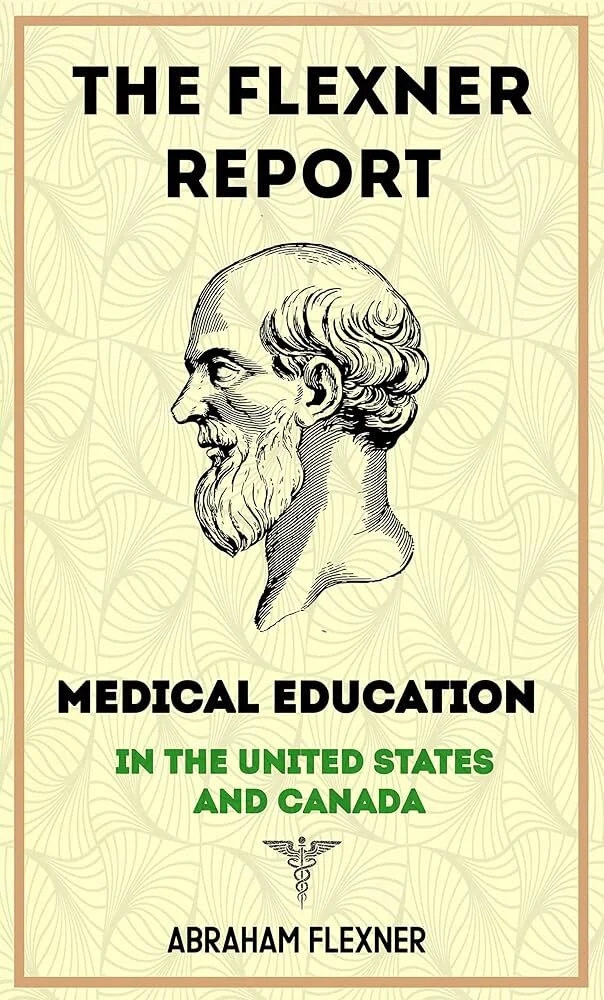Recap of 77th World Health Assembly
By standforhealthfreedom.com
Last week, the voting body of the World Health Organization (WHO) met in their annual meeting known as the World Health Assembly (WHA). Of course, the world’s focus was on the treaty and the International Health Regulations (IHR) amendments. In short, treaty negotiations were extended a year, and the assembly claimed to have adopted amendments to the IHR. But those highly anticipated items were not the only things on the agenda. The WHA held sessions on the effects of climate change on health policy (in line with the One Health approach), the Israel and Palestine conflict, universal health coverage, noncommunicable diseases, Immunization Agenda 2030 and The Big Catch Up (both aimed at eliminating “zero dose” children), tuberculosis, anti-microbial resistance, and maternal/child health. Read on for an in-depth look at the IHR amendments, as well as select notable meetings from WHA77.1
Strategic Roundtable on 50 Years of Global Vaccination
Sweeping claims of the success of vaccine programs were made at the 50th Anniversary of the “Essential Program on Immunization” (EPI) Strategic Roundtable side event of the World Health Assembly. It was said that with global cooperation, vaccines could actually eradicate some diseases—a claim that ignores the fact that in 200 years of vaccine history, this has never happened.
We acknowledge that the WHO declared smallpox eradicated, but stockpiles of the virus are still kept, and in fact, this year’s WHA resolved again not to destroy them. For example, in 2007, a child whose military father had gotten the smallpox vaccine ended up with the illness, as did health researchers who work with the virus. Military who may be in danger of bioweapon attacks are recommended to get the smallpox vaccine. In 2022, Science magazine declared that the U.S. should prepare for a return of smallpox. Does that sound like eradication?
Don’t lose touch with uncensored news! Join our mailing list today.
By now, you’ve probably seen the clip2 of WHO Director-General Tedros Adhanom Ghebreyesus decrying the “serious threat posed by antivaxxers.” That happened at this EPI Roundtable dinner event. He said, “It’s time to be more aggressive on pushing back on anti-vaxxers.” This threat amplifies the widespread calls for taking action on “misinformation and disinformation” we’ve heard for years now from the World Health Organization, other United Nations organizations, and our own governments.
It’s worth watching a 10-minute address3 by Budi Gunadi Sadikin, the Health Minister of Indonesia. His story is truly jaw-dropping. Indonesia ended up being one of the most successful Sadikin explains how he did it, which includes every trick in the book: bribery with free food, convincing priests to tell people, “God will love you if you get vaccinated,” using the military and police, addressing social and religious refusals with psychological and emotional approaches, and leveraging fear. He explains, “Vaccination is about understanding the local culture.” His use of the military was a stroke of strategic (and coercive) brilliance. As he put it, “They just exchange the pistol and the gun into the science and they can do the job well.”
By his own admission, he is not “a public health person or a medical person.” He’s a nuclear physicist by training and a 30-year banker by trade. So, why was he the president’s pick to lead the response to COVID by getting shots in arms? If a medical and public health background isn’t a prerequisite for promoting health policy, what is?
Sadikin was also invited to speak at a roundtable on WHO investment (fundraising), where he explained the role the WHO plays for countries. He explained, “So the things that I feel I receive the most from WHO is, WHO gives us guidelines… it’s a policy, a standard, an understanding on where the country should go. And I think WHO needs to strengthen that role, so we are clear what we have to do, whether it is intervention in primary care, or intervention in secondary care, health technology… That is something that we really need from WHO.”
There was also a call for a global focus on vaccines for older adults. The EPI program was initially set up for children, but we hear the calls for more vaccines for adults reverberating through global health policy. Here in America, our Department of Health and Human Services (HHS) has been heeding the call by expanding adult immunization in line with United Nations (UN) and WHO goals. Once again, we see America in lockstep with global policy, regardless of whether it is “binding.” In fact, our own CDC Director, Mandy Cohen, was part of the festivities, making a cameo appearance by answering a question about what inspires her with a quotable “Trust, Teamwork, and Terrific Operation,” to convince people to fall in line with public health edicts. Cohen was not a delegate involved in negotiations or meetings, but instead, was a guest.
Fundraising was a Central Part of the Week
A considerable amount of time was dedicated to a new “WHO investment round.” The WHO is asking for about $11 billion to fund the next four years. They flatly claim with that money they can save around 40 million lives. Potential investors got treated to their own Strategic Roundtable. During the roundtable, it was stated that 70% of the WHO’s budget comes from 10 donors. It was also declared that for every dollar spent on the WHO, investors get $35 back in “real investments.” The goal of the financing call was to change the way the WHO is financed. What are they going to do with the money? They want to make health facilities climate resilient, eliminate disease, and be able to address multiple health threats and emergencies at any time. A representative from the World Bank declared that an investment in WHO is the “best pathway to accumulate human capital.”
Another speaker addressed the role of culture in health. She said, “Art and cinema can play a very pivotal role in communicating and amplifying the work WHO and other organizations do.” She explained that art can be used for public health messaging because people change when they feel a certain way. “If the communication is right, I think it can reach far more people. It can reach governments; it can create a demand by the people.” She wrapped up by urging the WHO to “give people like us [artists] an opportunity to pass on this message in interesting and innovative ways in which we can create that change with people for them to get the message.” A speaker from the Gates Foundation noted that we’re facing more in the vaccine and pandemic product pipeline than we ever have in history because COVID accelerated that.
Amendments to the International Health Regulations Were Deemed Adopted
In the final hour of the 77th WHA, delegates were presented with a buttoned-up version of the IHR amendments proposal. Sight unseen, they were read a resolution to adopt the amendments, which were not finalized until the last hour of the week. The president of the assembly asked if they were ready to adopt and, “hearing no objection,” declared the IHR amendments adopted in less than a minute. During the week, delegates negotiated behind closed doors, with no press access, to finalize this package. We know that the Assembly did not see a final document until right before their “vote,” because the day before it was released and adopted, drafters announced they were still working, and would work again in the morning to finalize it.
Per Article 55 of the IHR, the amendment package should have been finalized in January of this year, four months before they were presented to the WHA for adoption. However, it was announced at the October 2023 meeting of the Working Group for the IHR (WGIHR) that they would not be able to meet that deadline, but legal counsel for the WHO announced the rules didn’t apply, and the WGIHR could work right up to the moment of adoption. And that’s exactly what they did. While working to expand their scope and power and have stricter, more enforceable rules for countries around the globe, the WHO declared the rules didn’t apply to them. This is why they are so dangerous. They have taken rogue actions and falsely adopted the behaviour under the premise of lawful powers. The international law community must stand up against this now, because otherwise, it will become law. International law, by and large, depends on voluntary agreement and actions. The tide has been turning toward “binding” actions and “consensus” instead of roll call votes, and this IHR treaty is a big step in that direction.
But the WHO, with the “political will” of the UN, isn’t directly rewriting our laws, they expect us to do that ourselves. The IHR amendments include the directive to change domestic law to align with the WHO’s rules.
This doesn’t stop at laws, because, of course, laws can be written but usually need money to go into force. The WHO has that one covered too. Countries “shall maintain or increase domestic funding” to build their own public health toolbox and help other countries do the same. These amendments will go into effect for many countries in just one year if countries don’t speak out. Interestingly, the 2022 amendment changing the timeline for amendments went into force during the WHA. Therefore, countries that do not object to that have 10 months, until April Fools’ Day 2025, to speak out and reject the amendments. Those countries who are rumoured to have rejected that 2022 amendment would be on the “old” timeline of having 18 months to reject, and two years until enforcement. So, we have a bizarre situation where some countries will have different rules applied through the same legal instrument. The WHO has not publicly addressed this issue at all and has, in fact, stonewalled inquiries about it.
Loyce Pace, the HHS Associate Director of the Office of Global Affairs, who started the ball rolling on IHR amendments in 2022, gloated about defying naysayers who thought this couldn’t be done in such a short timeline, declaring that all those who went along with this “did [their] countries proud.” In an interview, she revealed that her biggest takeaway from representing the United States in global health is how powerful she is. Pace is unelected, and her appointment as delegate needs no confirmation.
Moving Forward
We watch what they do, not what they say. And they are doing a lot. We will have action steps to take but, as always, we will be reaching out when we can make a big, strategic impact. Here’s what we can do now, and what Standing For Health Freedom (SHF) is watching moving forward:
- The UN Summit of the Future scheduled for September 22-23, 2024
- The US Global Health Security Strategy
- Engaging the arts for public health messaging, including the HHS partnership with the National Endowment for the Arts
- WHO in our Schools
1. standforhealthfreedom.com/wp-content/uploads/2024/06/IHR-amendments-doc-3.pdf
2. rumble.com/v4zvfwr-tedros-anti-vaxxer.html
3. rumble.com/v4zvj0u-indonesia-coercing-for-shots.html
Originally published at standforhealthfreedom.com/wha77
Explore More...















